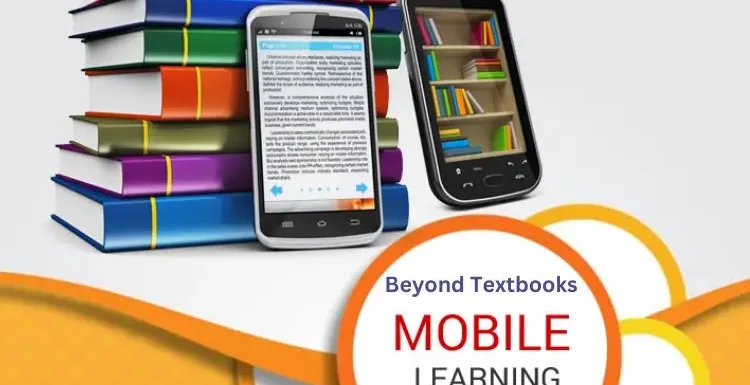
The growth of technology has expanded education beyond traditional classrooms for today’s generation. With advancements in technology, the landscape of education has evolved significantly.
Here you will explore the implications and benefits of using interactive multimedia in mobile learning environments. It will highlight how elearning through mobiles has revolutionized the way students learn today.
The Growth of Mobile Learning
Recently, technology has advanced rapidly, making mobile devices such as smartphones and tablets an integral part of our daily lives. It has allowed learners to access educational content anytime and anywhere, opening up new opportunities for digital learning.
As a result, the adoption of mobile learning solutions has soared, transforming the traditional classroom setting into a dynamic and interactive learning environment. One of the most notable changes is the integration of interactive multimedia in mobile learning environments.
This shift allows students to go beyond textbooks and engage more hands-on and immersively with educational materials. Students can actively participate in education by incorporating videos, simulations, and interactive quizzes into their learning experience to better understand the subject matter.
Embracing Interactive Multimedia
Interactive multimedia integrates various media elements such as text, images, audio, video, and animations to create an engaging and interactive learning experience. Unlike traditional textbooks that primarily rely on static text, interactive multimedia allows students to participate in the learning process through various interactive features actively.
These features can include:
- Quizzes
- Simulations
- Virtual reality experiences, and
- Interactive exercises
The features mentioned above promote critical thinking and problem-solving skills. Students can easily grasp complex concepts and keep information more effectively by incorporating multimedia elements. Leading providers of mobile learning solutions have much to offer through multimedia, like visual learning, gamification, and interactive learning materials.
Visual Learning
Visual learning engages the senses and helps students make connections between concepts, making it easier for them to remember and apply what they have learned. It is the power of images and videos in comprehension and understanding information.
For example, students can watch a video explaining a scientific process or historical event and visually represent the information. This hands-on process allows them to engage with the material and solidify their understanding vigorously.
Gamification and Interactivity
Gamification and interactivity are two key aspects of interactive multimedia that enhance the learning experience.
- Gamification includes integrating game elements into educational content, such as rewards, challenges, and competition. It makes the learning process more enjoyable and engaging for students, motivating them to participate and strive for success.
- Conversely, interactivity allows students to actively engage with the content and have a sense of control over their learning journey. It can be achieved through interactive exercises, where students can manipulate objects, make choices, and see immediate feedback, fostering a deeper understanding of the material.
Benefits of Interactive Multimedia
Interactive multimedia learning enhances critical thinking and problem-solving skills, preparing learners for real-world scenarios requiring teamwork. Apart from that, some prominent benefits that multimedia in education are:
- Enhanced engagement: Interactive multimedia captures students’ attention and keeps them actively involved in learning, making it more enjoyable and motivating.
- Improved knowledge retention: The interactive nature of multimedia allows students to actively participate and manipulate objects, which enhances their memory retention and understanding of the material.
- Personalized learning: Interactive multimedia can be tailored to individual learners’ needs, allowing them to learn at their own pace and focus on areas where they need more practice or support.
- Immediate feedback: With interactive multimedia, students receive immediate feedback on their performance, enabling them to identify and correct mistakes immediately, leading to faster progress.
- Increased collaboration: Interactive multimedia often include elements that promote teamwork and collaboration among students, fostering social skills and preparing for real-world collaborative environments.
Future Trends of Interactive Multimedia
Interactive multimedia constantly evolves and shapes how we consume and engage with content. Some future trends that mobile learning solutions cover for incorporating interactive multimedia are:
- Extended Reality (XR)
One of the future trends in interactive multimedia is the integration of Extended Reality (XR) technologies. Extended Reality is the blend of AR (Augmented Reality), VR (Virtual Reality), and mixed reality (MR) to create immersive and interactive experiences.
- Personalized Adaptive Learning with AI-Powered Multimedia
In addition to XR, another exciting development in the field of education is the integration of AI-powered multimedia into personalized adaptive learning. With the help of AI, educational platforms can analyze each student’s learning patterns, strengths, and imperfections to construct customized multimedia content that caters to their particular needs.
- Interactive Microlearning Modules
Interactive microlearning modules allow students to actively participate in learning and apply their knowledge in real-world contexts. For instance, biology students can learn about cellular respiration through a multimedia interactive microlearning module.
Here they can interact with molecules, observe chemical reactions, and make decisions that affect the outcome. This immersive experience allows the student to visualize and understand the complex biochemical reactions within a cell, enhancing their understanding and retention of the topic.
To Conclude
Mobile learning is an innovative approach to learning that has gained popularity in recent years. It offers a personalized and flexible learning experience that can be accessed anywhere and anytime.
With the increasing ubiquity of mobile devices, educators and institutions recognize the potential of mobile learning to revolutionize how education is delivered and received. These interactive elements engage students and make learning more enjoyable and effective.
Incorporating AI, AR, and VR technologies into mobile learning can significantly increase students’ engagement and understanding of complex concepts. The continuous advancements in these technologies promise even more innovative ways to deliver educational content in the future.
Author Bio
Emma Jones is a writer at Acadecraft, specializing in website accessibility. Intending to help individuals with diverse abilities access e-learning, she has conducted extensive research in the areas of technology, mobile learning solutions, and digital accessibility. She writes about e-learning accessibility to spread awareness about easy access to digital products for disabled people, which is also a mandate from the authorities worldwide.
